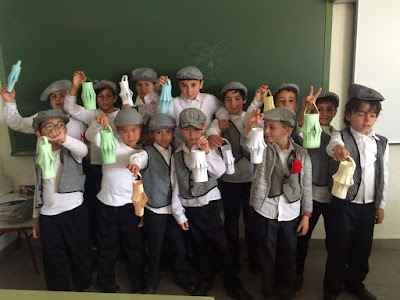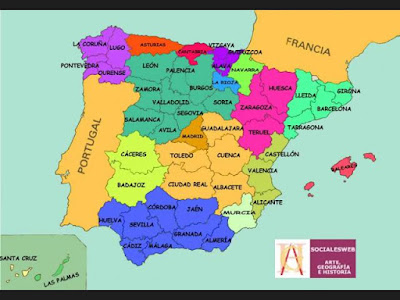Plants need water, nutrients and minerals (from the soil), air and sunlight to live. They make their own food.
Plants can´t move around but they can move one or more of their parts.
Parts of a plant
All plants have roots, stems and leaves and these have different functions:
1. Roots - They fix the plant in the soil and get water from it.
2. Stem - It holds the plant up and the food pass through it to grow.
3. Leaves - The plant makes its food in them.
Plant reproduction
Some plants have flowers. Their reproductive organs are inside the flower.
Flowers have different parts:
The corolla is made of petals. Petals are different colours to attract insects.
The stamens are the male reproductive organs. They have pollen at the top.
The pistil is the female reproductive organ. It has ovules inside.
The calyx is made of sepals. Sepals are green and protect the flower.
The reproductive process or pollination process.
First, an insect takes pollen form a stamen to a pistil.
Then, inside the pistil, the pollen joins an ovule to make a seed.
Next, the petals fall off the flower and the pistil grows around the seed into a fruit.
Finally, the fruit falls on the ground and the seed grows into a new plant.
Plant nutrition
Process = Photosynthesis
First, roots absorb minerals and water from the soil.
Then, water and minerals pass through the stem to the leaves.
Next, leaves absorb sunlight and carbon dioxide from the air.
Finally, when plants make food, they make oxygen too to return it to the air. That´s good because animals need oxygen to live!
Photosynthesis = minerals + water + sunlight + carbon dioxide = food + oxygen
Types of plants
Tree
If a plant has a trunk, it is a tree. The branches on a tree grow high above the ground. Trees grow slowly.
Bush
If a plant has a woody stem, it is a bush. The branches on a bush grow near the ground.
Grass
If a plant has a flexible, green stem, it is a grass. Gasses are usually short and grow quickly.
We can also classify plants by their leaves:
- Evergreen - they always have leaves
- Deciduous - they lose their leaves in autumn and grow new leaves in spring.
In what ways do we use plants?
We use plants to:
- make clothes (we get thread from cotton plants)
- make furniture (we use wood from tree trunks)
- make paper and card (from wood)
- eat (we eat fruit and vegetables). We eat roots (ex. carrots), stems ex. asparagus), leaves (ex. lettuce) and flowers (ex. cauliflower)
- make flour (we use flour to make bread, pasta and biscuits)
- make perfumes, soap and cosmetics
- make some medicines
You can study doing these exercises...
















































